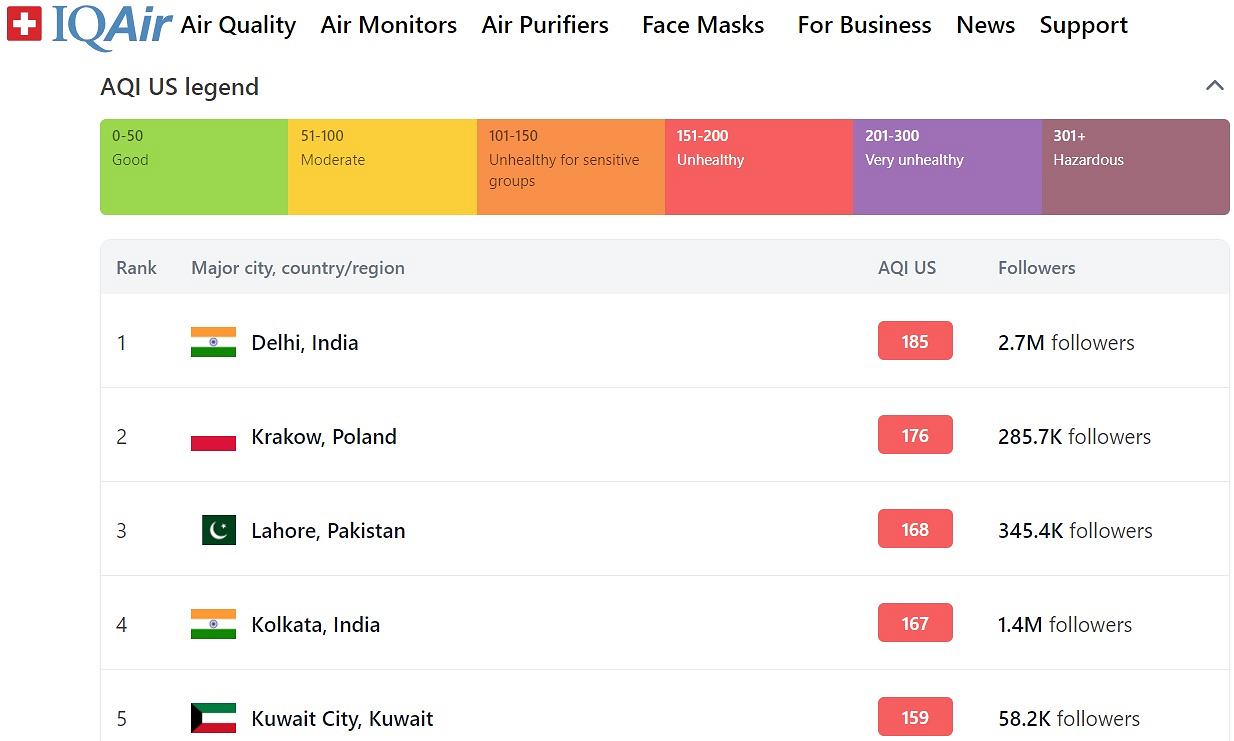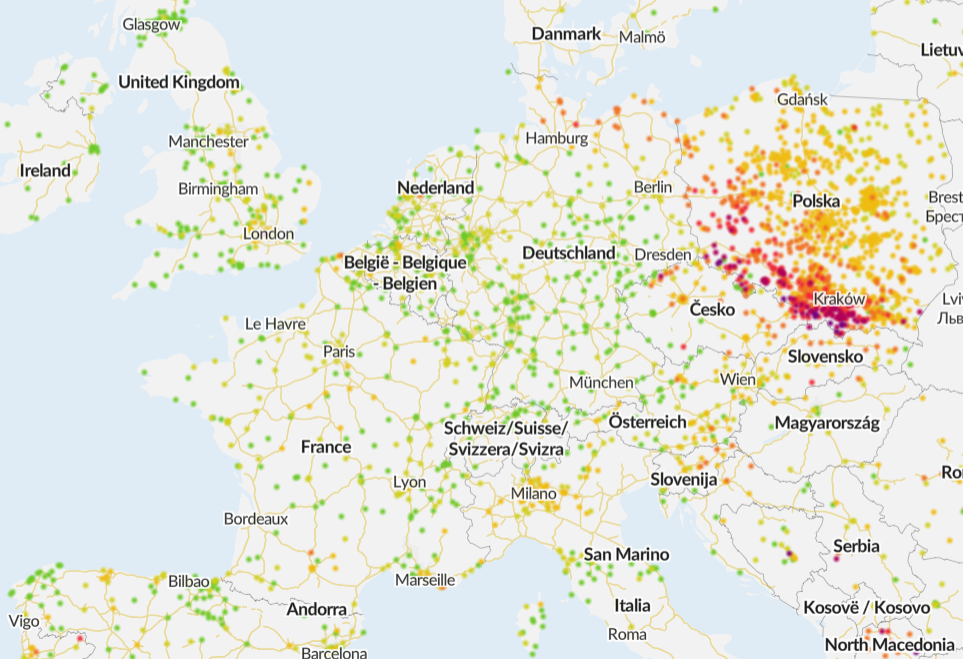The city of Kraków in southern Poland was recorded as having the second-highest levels of air pollution in the world at one point yesterday morning. Only Delhi in India had worse air quality at that time, according to global monitoring service IQ Air.
In many surrounding towns in the Małopolska province that Kraków is the capital of – but which are not included in IQ Air’s ranking – levels of air-borne pollutants were even higher.
That led regional authorities to issue official air pollution warnings in many towns, advising residents to limit outdoor physical activity and the amount of air they let into their homes.

Yesterday, the concentration of PM10 particulates, which have adverse effects on human health, reached 165 micrograms per cubic metre in Kraków, three and a half times higher than the maximum safe level recommended by the World Health Organisation (WHO), reported the Gazeta Wyborcza daily.
Levels of smaller PM2.5 particulates, which can penetrate the bloodstream, reached almost 120 micrograms per cubic metre, almost eight times higher than the WHO’s standard.
Although concentrations of both particulates fell today to 80 micrograms per cubic metre for PM10 and 66 for PM2.5, they were still well above the recommended maximum, air quality monitoring website Airly data showed.
In Kalwaria Zebrzydowska, 30 kilometres south of Kraków, PM10 concentrations yesterday were 230 micrograms per cubic metre (over five times the WHO recommended maximum) and PM2.5 173 micrograms per cubic metre (over 11 above the WHO’s standard).
🔴Dziś o poranku jakość powietrza, szczególnie na południu Polski jest zła.
❗️Ze względu na pogorszony stan aerosanitarny rekomenduje się ograniczenie pobytu na zewnątrz, co odnosi się szczególnie do osób z dolegliwościami układu oddechowego😷.
Dane: @PL_GIOS.#IMGW #powietrze pic.twitter.com/6FFviuwkh5— IMGW-PIB METEO POLSKA (@IMGWmeteo) December 6, 2023
Poland has long had some of Europe’s most polluted air, and the south of the country in particular sees high levels of smog during the winter heating season, when many people burn coal or other substances to warm their homes. The pollution causes tens of thousands of premature deaths annually.
Kraków has itself long had some of Poland’s worst air pollution, though its figures have improved in recent years amid anti-smog measures by the municipal authorities such as banning the burning of coal.
However, surrounding municipalities that do not have such measures in place contribute to persistently high pollution levels in the city. In Poland, coal is burned to generate around 70% of electricity and heat around one third of households.
Poland has been rated as the EU's least green country in a new ranking.
The EU-funded study takes into account the state of the environment, its effects on quality of life, and efforts to address climate issues https://t.co/hKyeucSzBl
— Notes from Poland 🇵🇱 (@notesfrompoland) November 5, 2022
In recent years, national and local authorities have introduced a number of programmes to tackle air pollution, including subsidies for households to modernise their heating systems and insulation. The programmes have been very popular, leading, for example, to a boom in heat pump installations.
As well as banning the burning of coal, Kraków has announced that from next year older, more polluting cars will be banned from entering the city centre in what will be Poland’s first clean transport zone.
Warsaw, the capital, has also now moved to ban the burning of coal and to introduce a clean transport zone of its own.
An annual “smog ranking” has found that Poland’s air – which is among the most polluted in Europe – has improved.
The average concentration of harmful PM10 particles was within maximum safe limits in all monitored places for the first time since 2015 https://t.co/sm1eD4dbJW
— Notes from Poland 🇵🇱 (@notesfrompoland) November 3, 2023
Main image credit: Airly

Alicja Ptak is senior editor at Notes from Poland and a multimedia journalist. She previously worked for Reuters.



















